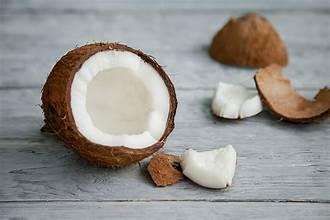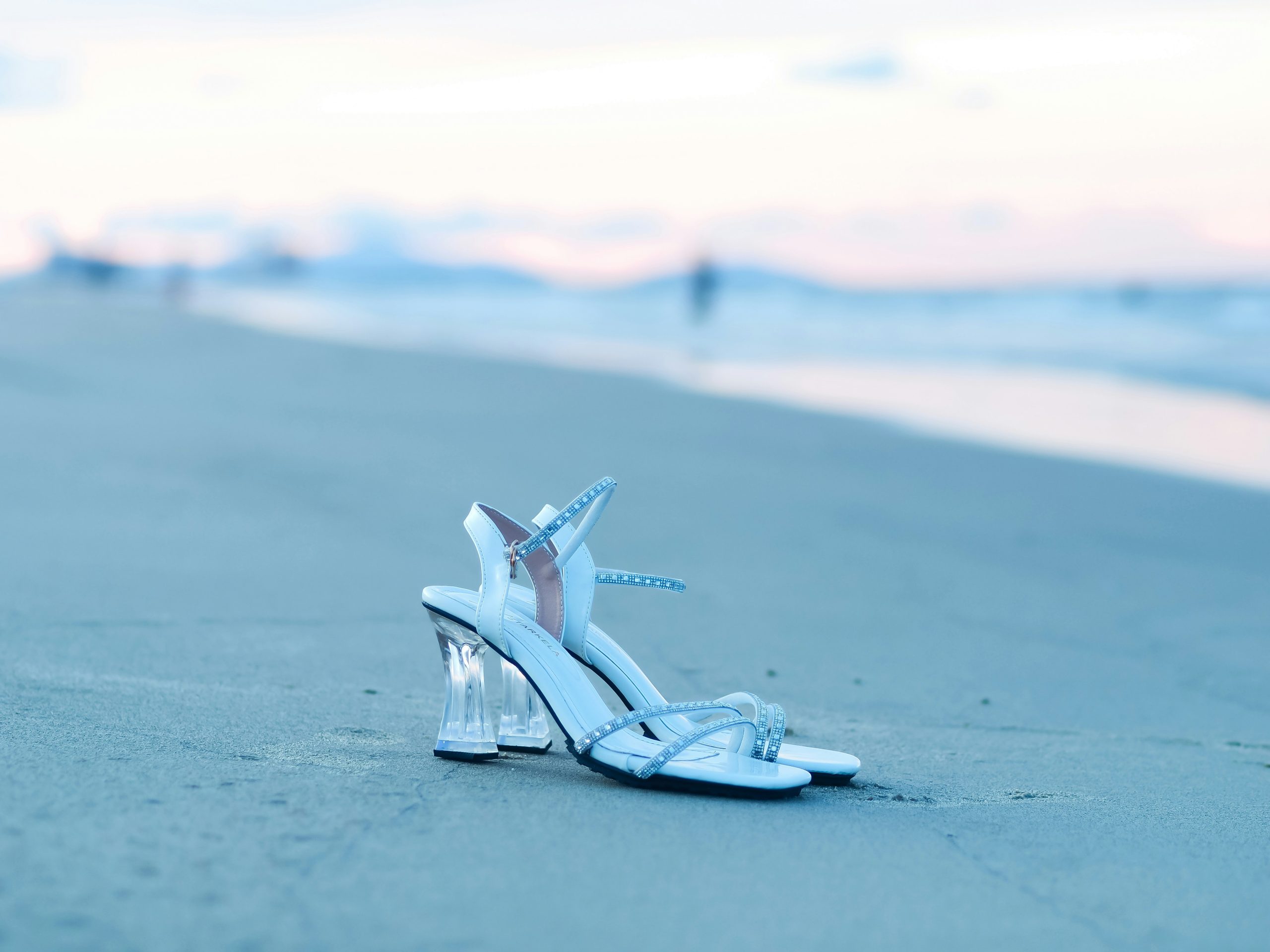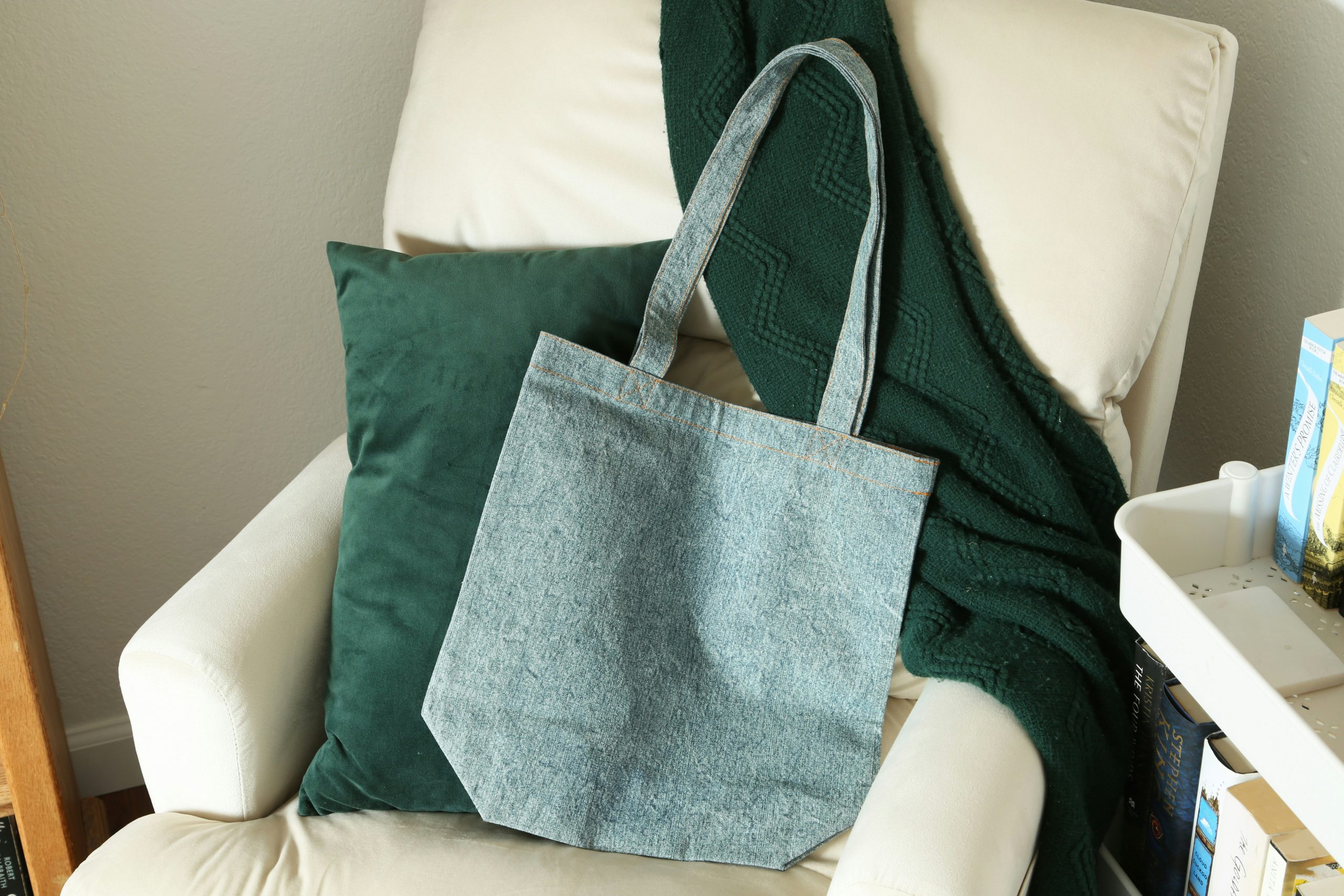Fashion
A Journey Through Fashion: Fall/Winter 2017 to Spring/Summer 2021: fw2017-ss2021
Published
7 months agoon
By
ahmad khan
fw2017-ss2021 Fashion reflects the cultural, economic and social pulse of society. The years between Autumn/Winter 2017 and Spring/Summer 2021 have been particularly transformative for the fashion world. The fashion industry has undergone significant change, influenced by technological advancements, sustainability initiatives and the challenges posed by the COVID-19 pandemic. fw2017-ss2021
This period was marked by experimental design, growing environmental awareness and a redefinition of luxury fashion. Let’s take a closer look at the major trends, designer highlights and movements that shaped the fashion industry over these past four years. fw2017-ss2021
- Fashion as Political and Cultural Commentary (Autumn/Winter 2017)
The Autumn/Winter 2017 collections saw designers increasingly using their platforms to make political and cultural statements. This reflected the global climate at the time, where tensions were running high around various social issues. fw2017-ss2021
A key example: Dior’s feminist approach Dior’s Maria Grazia Chiuri had her models walk down the runway in T-shirts emblazoned with the slogan “We Should All Be Feminists.” This initiative not only strengthened Chiuri’s commitment to gender equality, but also paved the way for the fashion industry to become more vocal on social issues. From that point on, feminism, inclusion, and diversity became fw2017-ss2021 fundamental themes in fashion, with more and more designers pushing these narratives in their collections.
Diversity on the Catwalk Autumn/Winter 2017 was also a season that stood out for diversity in models. More brands, especially in New York and London fw2017-ss2021 , began to make efforts to feature models of different ethnicities, body types, and genders. The fashion world, which has historically been criticized for its lack of diversity, began to address the issue more seriously, laying the groundwork for a commitment to greater inclusion in upcoming seasons.
- The Rise of Maximalism and Streetwear (SS2018)
Spring/Summer 2018 saw a notable shift towards maximalism and the growing influence of streetwear. After years in which minimalism and normcore dominated the scene, maximalism returned with a vengeance. Designers embraced vibrant colors, exaggerated silhouettes, and intricate embellishments, providing a stark contrast to the understated looks of past seasons. fw2017-ss2021
Streetwear Influence Streetwear continued to dominate the fashion conversation, with luxury brands like Louis Vuitton and Balenciaga embracing a street-inspired aesthetic. In 2017, the monumental Louis Vuitton x Supreme collaboration marked the formal fusion of haute couture and streetwear. Streetwear designers like Off-White’s Virgil Abloh have become renowned for brands that blend luxury with an urban aesthetic. His appointment as artistic director of Louis Vuitton’s menswear division in 2018 further demonstrated the cultural shift toward casual, street-inspired fashion.
- Sustainability Takes Center Stage (Autumn/Winter 2018)
With environmental concerns gaining global attention, the fw2017-ss2021 arrival of Autumn/Winter 2018 saw sustainability become a major focus in the fashion world, with more designers and brands prioritizing eco-friendly materials, ethical production practices, and reduced waste.
Key Example: Stella McCartney Stella McCartney, a pioneer of sustainable luxury fashion, continued to lead the way in Autumn/Winter 2018, pushing for the use of vegan leather and sustainable fabrics. McCartney’s strong commitment to the environment helped to bring the conversation around sustainability into the mainstream. She advocated for transparency in the fashion supply chain, encouraging consumers and fellow designers to be more conscious about their choices.
Circular Fashion Movement
The circular fashion movement, which focuses on fw2017-ss2021 extending the life cycle of clothing through repair, resale, and recycling, also began to grow during this time. Brands such as Patagonia and Eileen Fisher introduced programs where customers could return used products in exchange for credits, which would then be repaired or recycled.
The emphasis on sustainability during the Fall/Winter 2018 season marked a significant turning point in how the fashion industry approached environmental responsibility. This change laid the groundwork for even more sustainable efforts in the following season fw2017-ss2021 .
- The Impact of Digital Fashion and Technology (Spring/Summer 2019)
Digital fashion and technology took center stage in the industry during Spring/Summer 2019. Fashion Week began
Digital Fashion Shows and Virtual Catwalks The traditional fashion calendar was further disrupted as designers explored alternative formats to showcase their collections. Some companies, like Tommy Hilfiger and Burberry, adopted a “see-now-buy” model where customers could purchase pieces directly after the show. Others, like Balenciaga, experimented with virtual reality and 3D elements in their runway experiences.fw2017-ss2021
This period also saw the rise of influencer marketing
. Fashion brands, recognizing their powerful influence, shifted their focus from traditional celebrities to social media influencers. Influencers like Chiara Ferragni and Aimee Song became key figures in shaping consumer preferences as well as purchasing decisions.
- Changes due to the pandemic (OI2020-SS2021)
Arguably, the most dramatic change in the world of fashion came with the outbreak of the COVID-19 pandemic in 2020. The pandemic transformed nearly every industry, but fashion, especially with its reliance on physical shows and retail, faced unique challenges.
Loungewear and comfort take over As lockdowns were implemented around the world, consumers turned to comfort. Loungewear, sportswear, and casualwear replaced formalwear and luxury shopping. Brands like Lululemon and fw2017-ss2021 Nike saw a surge in demand as people prioritized comfort and well-being. Designers also responded by incorporating softer fabrics, relaxed cuts, and utilitarian silhouettes into their Fall/Winter 2020 and Spring/Summer 2021 collections.
The rise of digital fashion
weeks Traditional shows became impractical due to travel restrictions and social distancing requirements. In response, brands embraced digital fashion weeks. For example, Fall/Winter 2020 Paris Fashion Week featured pre-recorded runway shows, virtual presentations, and lookbooks. While it lacked the glamour of in-person shows, digital presentations allowed brands to reach a wider audience, democratizing fashion week in an unprecedented way.
Sustainability takes a stronger position The pandemic also prompted the fashion industry to think more about sustainability. With the issue of overproduction highlighted during the pandemic, consumers and brands have become more focused on making conscious purchasing decisions. The return of capsule wardrobes, slow fashion, and vintage and second-hand fashion has further accelerated the shift towards sustainability during this period.
Fashion response to social movements Amid the pandemic, the fashion industry has become more closely involved with social justice movements. The Black Lives Matter protests in 2020 had a ripple effect across the industry, raising calls for more representation of Black designers, models, and creatives. Major fashion houses responded by promising to diversify their hiring practices and showcase more inclusive collections.
- Gender fluidity and disrupting fashion norms Another key trend from Fall/Winter 2017 to Spring/Summer 2021 was the growing gender fluidity in fashion. More designers moved away from the rigid structures of traditional menswear and womenswear to embrace unisex designs and challenge outdated gender norms.
Key Designers:
Gucci and Harris Reed Alessandro Michele’s collections for Gucci, especially from 2017 onwards, were notable for their androgynous style, freely mixing masculine and feminine elements. Emerging designers like Harris Reed, known for his gender-fluid designs, gained prominence during this period, contributing to a broader cultural shift towards inclusivity and breaking down dichotomies in fashion.
Summary
: Fall/Winter 2017 to Spring/Summer 2021: A Time of Change fw2017-ss2021
The fashion landscape from Fall/Winter 2017 to Spring/Summer 2021 was defined by innovation, social awareness and adaptation. From the rise of streetwear and maximarism to a focus on sustainability and the digital revolution, the industry has undergone profound change. Perhaps more than any other factor, the COVID-19 pandemic has forced the fashion world to adapt quickly, pushing it towards a more inclusive, eco-friendly and digital future.
You may like
Fashion
Acetate Silk: The perfect combination of elegance and araceli silk or acetat
Published
7 months agoon
September 15, 2024By
ahmad khan
araceli silk or acetat Silk has been a symbol of luxury, beauty and sophistication for centuries. It originated in ancient China and has maintained its reputation as one of the most popular fabrics worldwide. However, advances in fiber science and the demand for affordable yet stylish alternatives have led to the emergence of fibers such as acetate silk. A synthetic fiber, acetate offers a similar look and feel to silk, making it an affordable and practical alternative. In this article, we explore the history, properties and uses of acetate silk, compare it to traditional silk, and explain why acetate silk is becoming popular in the fashion and textile industries. araceli silk or acetat
What is acetate?
Acetate is a semi-synthetic fiber made from cellulose, which is primarily obtained from wood pulp. It was first developed in the early 20th century as part of the broader evolution of synthetic fibers. The fiber is created through a process of treating cellulose with acetic acid and acetic anhydride. This chemical process produces cellulose acetate, a flexible and versatile material that can be spun into filaments used to make fibers. araceli silk or acetat
Although acetate is a synthetic product, it is often classified as a “semi-synthetic” fabric because it is derived from a natural resource, plant cellulose. It is different from fully synthetic fibers such as polyester and nylon, which are derived from petroleum products. araceli silk or acetat
Acetate silk: the birth of a new fabric
Acetate silk is a fabric made from acetate fibers, designed to mimic the luster, softness, and drape of natural silk. The development of acetate silk was the result of the fashion industry’s desire for an affordable fabric that could replicate the luxurious feel of silk without the high production costs. Natural silk is labor-intensive and expensive to produce due to the long process of harvesting the silkworm cocoons and spinning them into yarn, but acetate silk offers a more cost-effective and scalable solution. araceli silk or acetat
Acetate silk gained popularity in the early 1920s and 1930s, a time when many innovations were being introduced in synthetic fibers. The fabric was an attractive alternative to silk for everyday wear, and was often used for evening dresses, lingerie, and linings. Its soft texture and elegant drape make it particularly suitable for haute couture and formal wear.
Properties of Acetate Silk
Acetate silk has several unique qualities that make it a desirable fabric for both fashion and home textiles. araceli silk or acetat These properties have led to its widespread use in a variety of industries.
Shiny and Luster: One of the most notable features of acetate silk is its natural shine. Like real silk, acetate silk has a shiny surface that reflects light beautifully, giving garments made from this material an elegant and sophisticated look. Acetate’s sheen is so similar to silk that many people have trouble easily distinguishing between the two.
Soft Texture: Acetate silk has a soft, luxurious texture that gives it a delicate feel against the skin. This makes it ideal for lingerie, blouses, and dresses where comfort and softness are important. Acetate silk is also often used as a lining for clothing and bags, as the softness of the fiber allows it to slide easily over other materials araceli silk or acetat .
Drapability: Like traditional silk, acetate silk drapes beautifully, making it ideal for creating loose, elegant garments. Designers prize its ability to adapt gracefully to both structured evening dresses and loose, bohemian-style dresses.
Lightweight: Acetate silk is a lightweight fabric that enhances the appeal of garments designed for warm weather and layering. Its airy texture makes it comfortable to wear while still looking sophisticated.
Affordable: One of the main advantages of acetate silk is its affordability compared to natural silk. Acetate is less expensive to produce than synthetic fibers, making it an economical choice for both consumers and designers. It is affordable and suitable for everyday fashion and mass production. araceli silk or acetat
Acetate Silk vs. Natural Silk
Although acetate silk has many advantages, especially in terms of cost and availability, there are some differences araceli silk or acetat between acetate silk and natural silk that may affect a buyer’s decision.
Durability: Natural silk is valued for its strength and durability. It is one of the strongest natural fibers and has very good abrasion and tear resistance. Acetate silk, on the other hand, is more delicate. The fibers are prone to shrinkage and are more susceptible to damage from heat and moisture. Silk acetate garments are easily damaged during washing and ironing, so it is important to handle them with care.
Care instructions: Natural silk is delicate but can be hand washed or dry cleaned depending on the finish. Acetate silk, however, is more sensitive to water and solvents. Exposure to moisture can weaken or discolor the fibers, so dry cleaning is usually required araceli silk or acetat .
Environmental impact: Silk is an environmentally friendly fabric because it is obtained from silkworm cocoons, a renewable natural resource. However, even though acetate is semi-synthetic, the chemical processes involved in its production create a more significant environmental burden. Acetate production contains chemicals such as acetone, which can cause pollution if not handled responsibly.
Moisture absorption: One of the disadvantages of acetate silk compared to natural silk is its ability to absorb moisture. Natural silk is breathable, hygroscopic, and comfortable to wear in any climate. Acetate silk, on the other hand, has low moisture absorption and does not absorb sweat effectively, which can cause discomfort in humid environments. araceli silk or acetat
Hypoallergenic properties: Silk is naturally hypoallergenic, making it a good choice for those with sensitive skin or allergies. Although acetate silk is soft and smooth, it does not have the natural hypoallergenic properties of silk, and some people may find it unsuitable for direct contact with the skin.
Uses of Acetate Silk Acetate silk is used in a variety of products, especially in fashion and interior design. Its versatility, aesthetic appeal, and affordability make it a popular choice for several key uses araceli silk or acetat .
Clothing: Acetate silk is often used in women’s clothing, especially nightwear, blouses, skirts, and lingerie. Its ability to mimic the luxurious look and feel of silk makes it popular for creating affordable yet elegant garments. Designers often use acetate silk in special occasion dresses and suits, as its lustrous appearance adds a sophisticated touch to any outfit.
Linings: Acetate silk is often used as a lining material for jackets, coats, skirts, and bags due to its soft texture. It provides a smooth surface that allows the outer fabric to move smoothly, improving the overall comfort and functionality of the garment. araceli silk or acetat
Interior Design: Acetate silk is used in home textiles such as curtains, upholstery, and cushions, where its aesthetic appeal and ability to drape snugly around the waist are desirable qualities. Its luxurious appearance can enhance the look of your home’s interiors without the need for expensive natural silk fabrics araceli silk or acetat.
Accessories: Apart from clothing, acetate silk is also used in accessories such as scarves, ties, and hairbands, where its shine and softness enhance the look and feel of the product.
Conclusion
Acetate silk is an attractive alternative to natural silk, combining beauty, functionality and affordability. While it may not match the durability or environmental benefits of traditional silk, it offers a silk-like feel and look that appeals to fashion designers and consumers alike. Whether in clothing, interior design or accessories, acetate silk plays a vital role in the modern textile industry, providing a practical solution for those seeking elegance without spending a fortune. Its continued popularity underscores its importance in the worlds of fashion and design, where beauty and accessibility go hand in hand.
Fashion
Glamorpump1969: A retro revolution in fashion and glamourpump1969
Published
7 months agoon
September 10, 2024By
ahmad khan
glamourpump1969 In the ever-evolving world of fashion, trends from different eras periodically come back into style, but few concepts capture the core of vintage charm as effectively as Glamorpump1969. Paying homage to the vibrancy of the 60s, the retro-futurism of high fashion, and the strong femininity of the decade, Glamorpump1969 channels the iconic style of 1969 while expressing the modern beauty, confidence, and individuality of a fashion movement that embodies glamourpump1969
Glamourpump1969 is more than just a brand. It is an aesthetic and lifestyle movement that ushers people into an era of liberation, creativity, and bold expression. It combines the timeless appeal of high heels (or “shoes”), which became a symbol of femininity in the mid-20th century, with the chic elegance of the late 1960s. This movement appeals not only to vintage fashion lovers, but also to anyone who wants to make a statement about identity, empowerment, and self-expression in today’s world.
The Year That Shaped a Generation: 1969
Before we delve deeper into what Glamourpump1969 represents, it’s crucial to understand the cultural context of 1969. It was an important year that left an indelible mark on history in many ways: music, politics, fashion, social movements, and more.
In fashion, the late 1960s were a time of innovation and rebellion. Designers like Yves Saint Laurent, Marie Quant, and André Courrèges were pushing the boundaries of what clothing could represent. The miniskirt became a symbol of youthful rebellion and space-age designs inspired by the optimism of the space race became popular.glamourpump1969
Women in 1969 embodied the spirit of liberation. As the feminist movement gained momentum, women sought to challenge traditional roles and express their individuality through both words and clothing. High heels, and pumps in particular, have become a symbol of female empowerment, straddling traditional notions of femininity and a new wave of women forging their own identities in a rapidly changing world.
The Appeal of Pumps: A Feminist Statement
At the heart of Glamourpump1969 is the quintessential pump. Pumps are a type of shoe that has historically symbolized both elegance and power. Pumps have evolved over the decades from a practical shoe to a high fashion staple. By the late 1960s, high heels were no longer just for formal events, but had become an everyday fashion item worn by women to express their style, whether at work or in a nightclub.
For women of the time, high heels were more than just shoes; they were a statement of identity. As more women entered the workforce, they began to develop a professional aesthetic that combined traditional femininity with a new independence. Sleek high heels created a powerful visual statement, embodying the balance between strength and elegance.
Glamorpump1969 revives this cultural icon for a new generation. While heels are often criticized for being uncomfortable or restrictive, high heels have also been celebrated as a way for women to own their femininity and express themselves with confidence. The movement behind Glamourpump1969 re-evaluates heels as a tool of empowerment, reminding women that fashion can be a form of self-expression and liberation.
Glamourpump1969 Fashion Aesthetics
From a fashion perspective, Glamourpump1969 combines the modern geometric style of the 1960s with the more psychedelic and free-spirited styles that emerged later in the decade. This era, where tailored lines and bold, expressive colors collided to create an unforgettable aesthetic that still influences modern fashion.
Color Palettes and Patterns: Bright primary colors like red, yellow, and blue were at the heart of the Mod fashion movement of the early 1960s, but later in the decade more psychedelic patterns and earth tones emerged. Glamorpump1969 reinterprets these color palettes for the modern era, focusing on geometric prints, monochromatic ensembles, and bold contrasts.
Miniskirts and Shift Dresses: One of the most iconic silhouettes of 1969 was the miniskirt or shift dress. Both emphasized the youthful and free spirit of the era. Glamorpump1969 takes this style and pairs it with statement heels that elongate your legs and add a chic touch. The overall effect will be fun and sophisticated, combining past trends with contemporary touches.
Accessories: No look is complete without the right accessories. At Glamourpump1969, every detail has been thought of. Statement, oversized sunglasses, bold jewelry, and colorful tights are essential to achieving the perfect retro look. In keeping with the vintage theme, these accessories are often inspired by the fun and experimental nature of 60s fashion, but with a modern twist, they are still relevant today.
Footwear: The heart and soul of Glamorpump1969 is in our footwear, especially our iconic heels. Whether classic stilettos or block heels, heels represent both the vintage glamour of 1969 and a modern reinvention of what it means to walk with confidence. Glamourpump1969 heels come in a variety of styles, from patent leather to suede, from bold prints to sleek minimalist designs. All heels are created to combine comfort and style, giving you a glamorous yet understated vibe.
Glamorpump1969 Cultural Influence
Glamorpump1969 goes beyond fashion and taps into cultural narratives of empowerment and individualism. This movement emphasizes that style is a reflection of a person’s inner strength and confidence. In an age where social media often sets unrealistic beauty standards, Glamorpump1969 is breaking those molds by encouraging women to embrace their uniqueness and celebrate their unique charms that I’m about to try.
At the core of this movement is the idea that femininity and power are not mutually exclusive. Historically a symbol of traditional femininity as well as a sign of independence, heels perfectly embody this philosophy. By embracing 1969 fashion, Glamorpump1969 reminds women of the pioneering spirit of that era, when women took on new roles in society and redefined what it meant to be strong and feminine.
A modern interpretation of retro charm.
Glamorpump1969 is rooted in nostalgia, but also in forward thinking. Today’s women are rewriting the rules of what it means to be glamorous and Glamorpump1969 is evolving with them. The brand/movement represents a fusion of past and present, honoring its 1969 heritage while also offering a range of products and experiences that appeal to modern sensibilities.
Sustainable Fashion: With an increasing awareness of environmental issues, Glamorpump1969 is committed to sustainability. Many of its products are made from eco-friendly materials and the brand promotes slow fashion, encouraging consumers to invest in timeless, high-quality pieces that go beyond seasonal trends.
Inclusivity: Fashion has traditionally been an exclusive industry, but Glamorpump1969 aims to break down these barriers by offering inclusive sizing and styles for all body types. The brand promotes body positivity and strives to help all women feel beautiful in their own skin.
Empowerment Through Expression: Beyond aesthetics, Glamorpump1969 offers workshops and events focused on self-expression, confidence-building, and empowerment. These events, both virtual and in-person, create a community where people can come together to celebrate their unique styles and learn from each other.
Bottom Line: Glamorpump1969 as a Movement
Glamourpump1969 is more than just a brand or a fashion trend. It’s a movement that celebrates femininity, individuality, and the power of self-expression.
Fashion
Twill Fabric 101 | Sewing Guide Using what is trill tote material
Published
7 months agoon
September 7, 2024By
ahmad khan
what is trill tote material Today I want to dive into the world of twill fabrics and give you a quick understanding of why twill is so versatile, what it has to offer us, and what twill is. We also have sewing tutorials for making basic pants using twill. In this blog post, you’ll learn everything you need to know about twill fabric, from its features and benefits to its proper uses and care.
Peek-a-Boo Pattern Shop has a variety of sewing patterns that work with twill fabric, including trail blazer pants, chinos, and sport coats for girls.
What can you make with twill fabric?
Twill is best known for its chinos and cotton denim. In other words, it’s perfect for pants, shorts, and skirts. Also perfect for jackets, uniforms, ties, suits, etc. Twill is a versatile fabric as it is not only suitable for clothing, but can also be used to make rugs, curtains, table runners, napkins, pillows, bags, and more.what is trill tote material
About Twill Fabric
Twill fabric is woven in a distinctive diagonal pattern, making it durable and wrinkle-resistant. One of the most iconic contexts in which twill weaves are used is in the production of jeans. Typically used for pants, this cotton twill fabric is also suitable for home decor and accessories. For example, fabrics such as cotton, wool, silk, and polyester blends can be made into twill styles using this method. That said, twill weaves can be found in a variety of fabric bases. The front or right side of twill fabric has a more pronounced diagonal weave than the back side, giving it a slightly different look.what is trill tote material
Here are some of the characteristics of twill weave.
Durability: Known for its excellent strength, cotton twill fabric is ideal for long-lasting apparel and upholstery. Resistant to wear, tear, and fraying, it ensures durability and dependability, making it ideal for high-traffic areas and frequently used what is trill tote material textile products. Crafters take advantage of cotton twill’s durability to create long-lasting pieces for a variety of uses, recognizing its durable nature as a long-lasting solution.what is trill tote material
Texture: The woven pattern of cotton twill fabric creates a unique texture that sets it apart from plain weaves. Diagonal lines add depth and visual interest, giving the fabric a unique look and feel. This textured surface provides tactility and enhances the overall appeal. The twill weave contributes to the unique texture of the fabric, making it ideal for a variety of sewing projects.
Draping: The twill weave falls gracefully, creating a flowing silhouette that enhances the fit of the garment. Flexible drapes add sophistication to what is trill tote material clothing and home décor, while graceful, flowing movements enhance visual appeal.what is trill tote material The drape of cotton twill elegantly contours to the body, making it ideal for garments that require fluidity.
Versatility: The adaptability of twill weave allows for the creation of a wide range of garments and accessories suitable for both casual and formal wear. It can also be used for upholstery, making it ideal for durable and stylish furniture slipcovers. Additionally, the versatility of twill weave makes it perfect for creating a variety of accessories such as bags and hats, and it can be used to create a wide range of garments from pants to outerwear.what is trill tote material
Wrinkle and Stain Resistant: Twill fabrics are wrinkle and stain resistant, adding to their appeal and making them a practical, long-lasting choice for apparel, upholstery, and everyday use. This fabric requires little maintenance, making it perfect for traveling and maintaining a fresh, clean look over time. Cotton twill is popular for a variety of uses because it resists wrinkles, stains, and is durable.
Longevity: Cotton twill is extremely durable, so it maintains its quality even after use and washing. This long lifespan makes it a sustainable choice for textile products and reduces the frequency of replacement. Whether used in apparel or upholstery, twill’s durability ensures reliability in a variety of applications.
The Future of Trill Tote Material in the Textile Industry
The introduction of Trill Tote material has the potential to transform the tote bag market, but its applications extend far beyond just bags. As more industries begin to prioritize sustainability and environmentally friendly practices, what is trill tote material the demand for innovative materials like Trill is expected to grow. From clothing to home goods, the versatility of this material makes it a strong candidate for a wide range of products.
Furthermore, as consumer awareness about the environmental impact of their purchasing decisions continues to increase, there will be more pressure on companies to offer sustainable alternatives. Brands that adopt Trill Tote material are likely to stand out in the marketplace, appealing to eco-conscious customers who are willing to invest in products that align with their values.
Conclusion
In an era where sustainability is no longer optional but essential, Trill Tote material offers a glimpse into the future of eco-friendly textiles. By blending recycled and natural fibers, the material provides a high-performance alternative to traditional fabrics, with significant benefits for both consumers and the environment. As more companies and designers embrace materials like Trill, we can look forward to a world where fashion and function coexist with environmental responsibility, creating a more sustainable future for all.what is trill tote material
Whether you’re a consumer looking for a durable, stylish tote bag or a brand looking to reduce your environmental impact, Trill Tote material represents a new standard in sustainable fashion. Its combination of durability, eco-friendliness, and aesthetic versatility ensures that it will be a key player in the shift toward greener textiles.
Trending
-

 Blog12 months ago
Blog12 months agoExploring the Wonders of myfavouriteplaces.org:// Blog
-

 Fashion12 months ago
Fashion12 months agoDiscovering the Enigmatic World of λιβαισ
-

 News12 months ago
News12 months ago专业良家收割机: Revolutionizing Home Harvesting
-

 Blog11 months ago
Blog11 months agoUnveiling the Magic: Decoding the Enigma of 2819294213
-

 Entertainment12 months ago
Entertainment12 months agoGeekzilla Radio: Where Geekery Meets the Airwaves
-

 News12 months ago
News12 months agoUnveiling the Enigma: Deciphering the Goads on NYT
-

 Tech12 months ago
Tech12 months agoDecoding the Enigma: Exploring the World of ahr0chm6ly9wcm9ka2v5cy5uzxqvexv6ds1wcm9klwtlexmv
-

 Tech12 months ago
Tech12 months agoUnveiling the Magic of hannahoetzel2: A Journey into Digital Artistry
